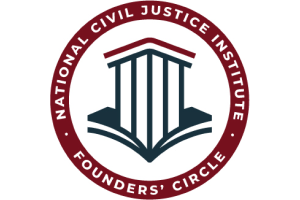Client Reviews
Scaffolding Collapse
One of the most popular pieces of construction equipment is the scaffold, an elevated, temporary work platform. Their versatility allows them to be used essentially as ladders, and they generally give workers greater balance and stability – when erected, used and dismantled properly.
It’s estimated approximately 65 percent of the construction industry – or about 2.3 million workers – routinely work on scaffolds.
Associates and Bruce L. Scheiner, Attorneys for the Injured, know scaffolding collapse is an all-too-common problem on construction sites in Florida and throughout the country.
There are three basic types of scaffolds: Supported, Suspended and Aerial Lifts. Supported scaffolds are supported by rigid, load-bearing members, such as poles, frames, legs and outriggers. Suspended scaffolds are suspended by ropes or some other kind of non-rigid means form an overhead structure. Finally, aerial lifts are devices mounted to vehicles used to get workers to an elevated position (boom trucks or cherry pickers).
While all are subject to collapse, we are primarily focused here on supported scaffolding collapses.
Catalysts for Scaffolding Collapse
The Bureau of Labor Statistics estimates that in 72 percent of all scaffolding accidents, injured workers blamed either the support or the planking giving way. This is typically the result of the planks giving way to a too-heavy occupant or material load. Overloading resulting in instability is also cited in many scaffolding collapses. Workers slipping or being struck by falling objects are also cited as major problems.
Compounding the issue is the fact that, when the Occupational Safety & Health Administration revised its scaffolding standards in the late 1990s, research revealed a quarter of workers on scaffolds had not gotten any scaffold training. Worse, more than three-fourths of all scaffolds in use did not have any guardrails to protect workers from falls.
Simple compliance with federal safety standards, it’s believed, could prevent some 4,500 scaffolding accidents annually, and save as many as 50 lives.
According to a recent analysis by researchers at the University of Tennessee, primary essential elements of safe scaffolding construction are:
- Appropriate construction – Built within OSHA standards relating to strength and structural integrity, which means being fully planked and able to support their own weight, plus four times the intended load. Height should be no more than four times its minimum base dimension unless special precautions are used.
- Proper Access – Limiting access to and from one scaffold to another surface, particularly with varying inclines.
- Competent Persons – Workers and site supervisors who are properly trained and monitored. Competent persons are required to select and direct employees who erect, dismantle, alter or move scaffolds, to determine if it’s safe for workers to be on the scaffold during certain weather conditions, to train workers and to inspect the scaffold for visible defects before each and every work shift or after any incident that might impact the scaffold’s structural integrity.
Unfortunately, these guidelines are not always followed, and the results can be tragic.
For example in March 2015 a scaffold situated at a high-rise construction site in North Carolina collapsed, killing three construction workers and seriously injured a fourth. OSHA launched an investigation, though initial reports were the scaffolding was being dismantled at the time of the collapse. At least one of the workers was wearing a personal fall arrest system, but it was reportedly hooked to the scaffolding itself, which meant it offered no protection when the scaffold came crashing down.
A similar case in South Florida was reported in February 2014. A crew of transportation workers was performing road maintenance on an overpass when the scaffolding collapsed and landed in the water and on railroad tracks underneath. Three workers were left dangling more than 100 feet in the air by their harnesses. A fourth, who fell to the top of the scaffolding, sustained severe injuries.
In 2018, two construction workers were killed when their scaffolding collapsed while working on a project near Disney World.
OSHA’s Scaffolding Safety Standards
The last time OSHA updated its rules on scaffolding safety standards was 1996. The changes are codified in 29 CFR Part 1926.
Primarily, those revisions were made to address the regulation of design, construction and use of scaffolding with the goal of preventing:
- Falls
- Falling objects
- Structural instability
- Electrocution
- Overloading
In addition to covering a broader array of scaffolds, the updated guidelines also gave employers more options for fall arrest systems used by workers and ensures those who erect and dismantle scaffolds have adequate fall protection “where feasible.”
Contact Associates and Bruce L. Scheiner, Attorneys for the Injured, for a free and confidential consultation to discuss your rights. There are no fees or costs unless we win. Offices in Fort Myers, Cape Coral, Naples and Port Charlotte.
Call 800-646-1210 for a Free Consultation












